
The Algerine-class minesweeper was a large group of minesweepers built for the Royal Navy (RN) and the Royal Canadian Navy (RCN) during the Second World War. 110 ships of the class were launched between 1942 and 1944.

HMS Mutine was a turbine-powered Algerine-class minesweeper of the Royal Navy. She served during the Second World War, and was adopted by the civil community of Mitcham, Surrey following a successful Warship Week National Savings campaign held in February 1942.

HMS Loyalty was a turbine-powered Algerine-class minesweeper of the Royal Navy, formerly HMS Rattler. She served during the Second World War. Commissioned in 1943, Loyalty saw action off the coast of Normandy during the Allied assault there in 1944. While performing duties off the coast, the ship was torpedoed by a German submarine and sank.

HMS Squirrel was a turbine-powered Algerine-class minesweeper built for the Royal Navy during the Second World War. She was scuttled after striking a mine in 1945.
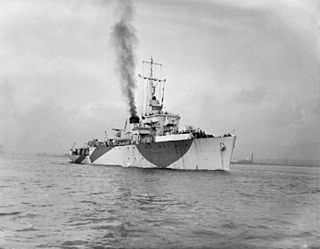
HMS Vestal was a turbine-powered Algerine-class minesweeper of the Royal Navy. She was launched in 1943 and saw service in the Pacific War against the Empire of Japan. She was critically damaged by Japanese kamikaze aircraft in 1945 and was subsequently scuttled in waters close to Thailand.

HMS Algerine was the lead ship of her namesake class of minesweepers built for the Royal Navy during World War II, the Algerine-class minesweepers. Initially assigned to the North Sea, she was transferred to lead the 12th Minesweeping Flotilla. The Flotilla were posted to the Mediterranean to assist with Operation Torch. In 1942, after a successful mine clearing operation off Bougie, she was torpedoed by the Ascianghi, causing Algerine to sink, leaving only eight survivors.
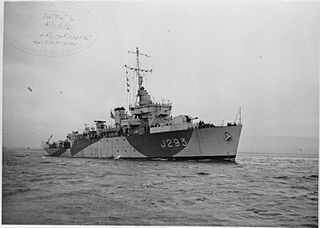
HMCyS Parakrama, was a turbine-powered Algerine-class minesweeper of the Royal Ceylon Navy, originally built as HMS Pickle (J293) for the Royal Navy during World War II, and transferred to Ceylon by the United Kingdom in 1958. She was scrapped in 1964.

HMS Hare (J389) was a steam turbine-powered Algerine-class minesweeper during the Second World War. She survived the war and was sold to Nigeria in 1958 as HMNS Nigeria.

HMS Rosario (J219) was a steam turbine-powered Algerine-class minesweeper during the Second World War. She survived the war and was sold to Belgium in 1953 as De Moor (M905).

HMS Spanker (J226) was a steam turbine-powered Algerine-class minesweeper during the Second World War. She survived the war and was sold to Belgium in 1953 as De Brouwer (M904).
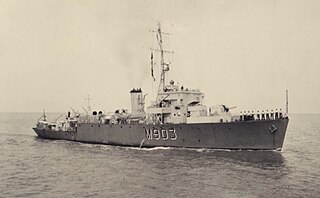
HMS Fancy (J308) was a steam turbine-powered Algerine-class minesweeper during the Second World War. She survived the war and was sold to Belgium in 1951 as A.F. Dufour (M903).

HMS Liberty (J391) was a steam turbine-powered Algerine-class minesweeper during the Second World War. She survived the war and was sold to Belgium in 1949 as Adrien de Gerlache (M900).
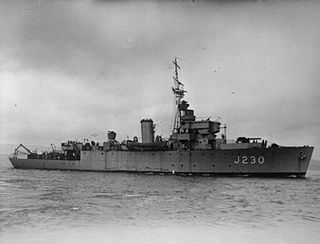
HMS Cadmus (J230) was a steam turbine-powered Algerine-class minesweeper during the Second World War. Launched in 1942 the ship survived the war and was sold to Belgium in 1950 as Georges Lecointe (M901).

HMS Espiegle (J216) was a steam turbine-powered Algerine-class minesweeper during the Second World War.

HMS Brave (J305) was a steam turbine-powered Algerine-class minesweeper during the Second World War.

HMS Chameleon (J387) was a steam turbine-powered Algerine-class minesweeper during the Second World War.

HMS Cheerful (J388) was a steam turbine-powered Algerine-class minesweeper during the Second World War.

HMS Circe (J214) was a steam turbine-powered Algerine-class minesweeper during the Second World War.
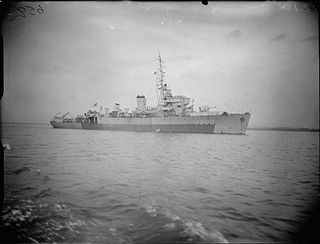
HMS Jewel (J390) was a steam turbine-powered Algerine-class minesweeper during the Second World War.
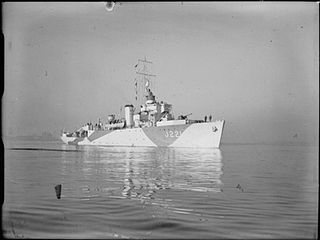
HMS Onyx (J221) was a steam turbine-powered Algerine-class minesweeper during the Second World War.



















